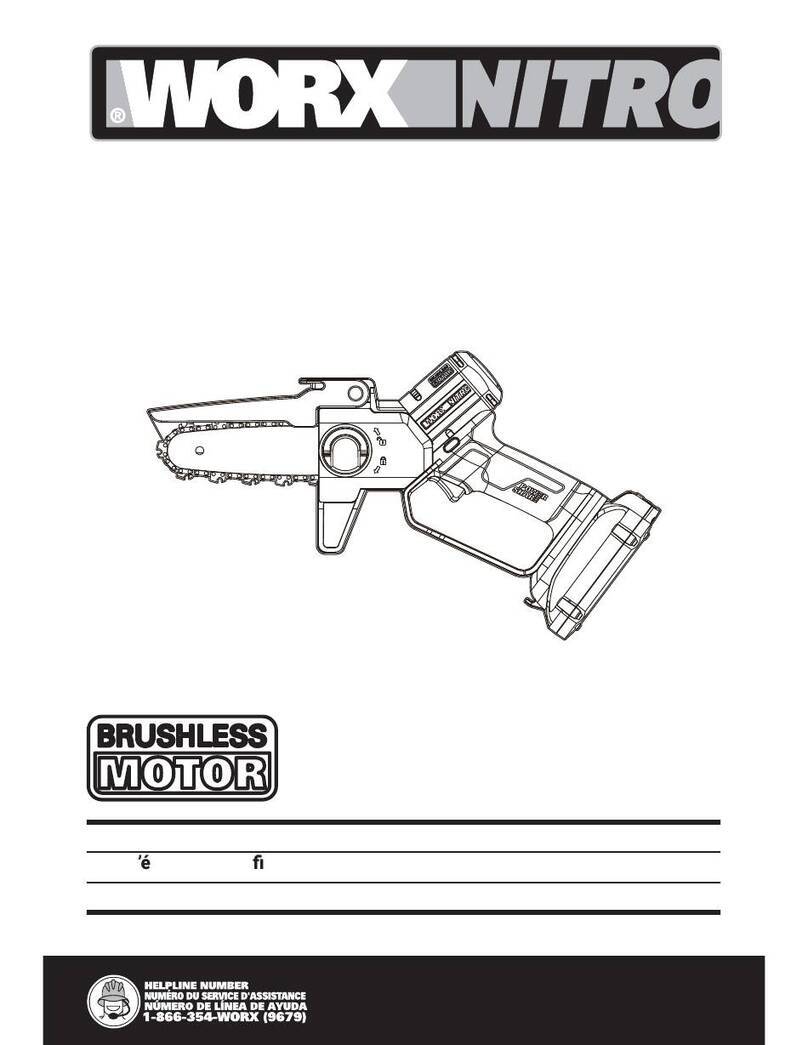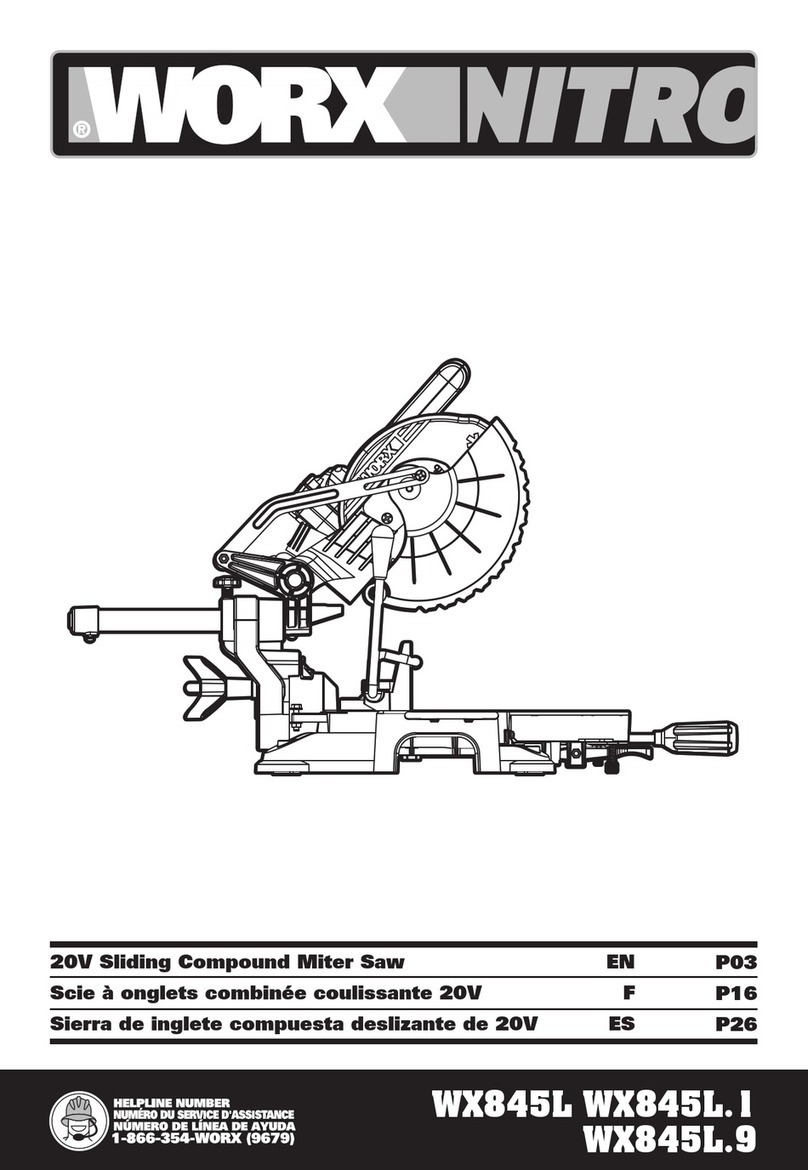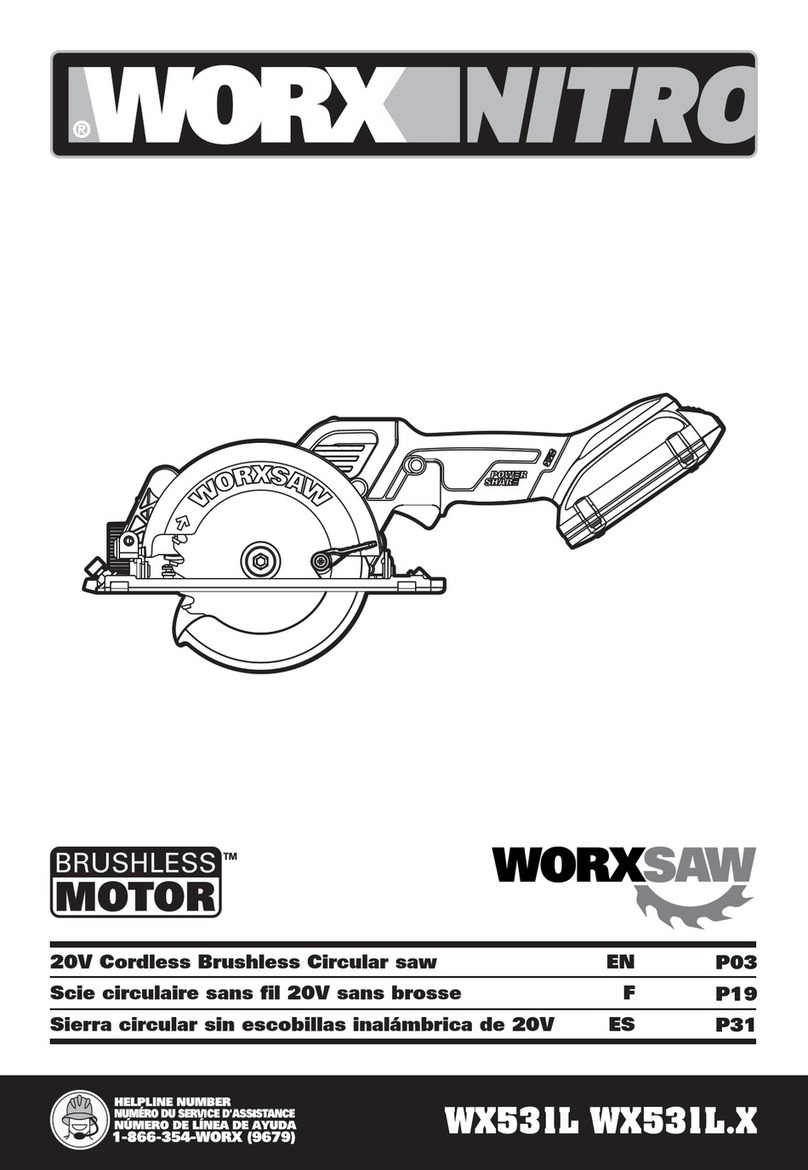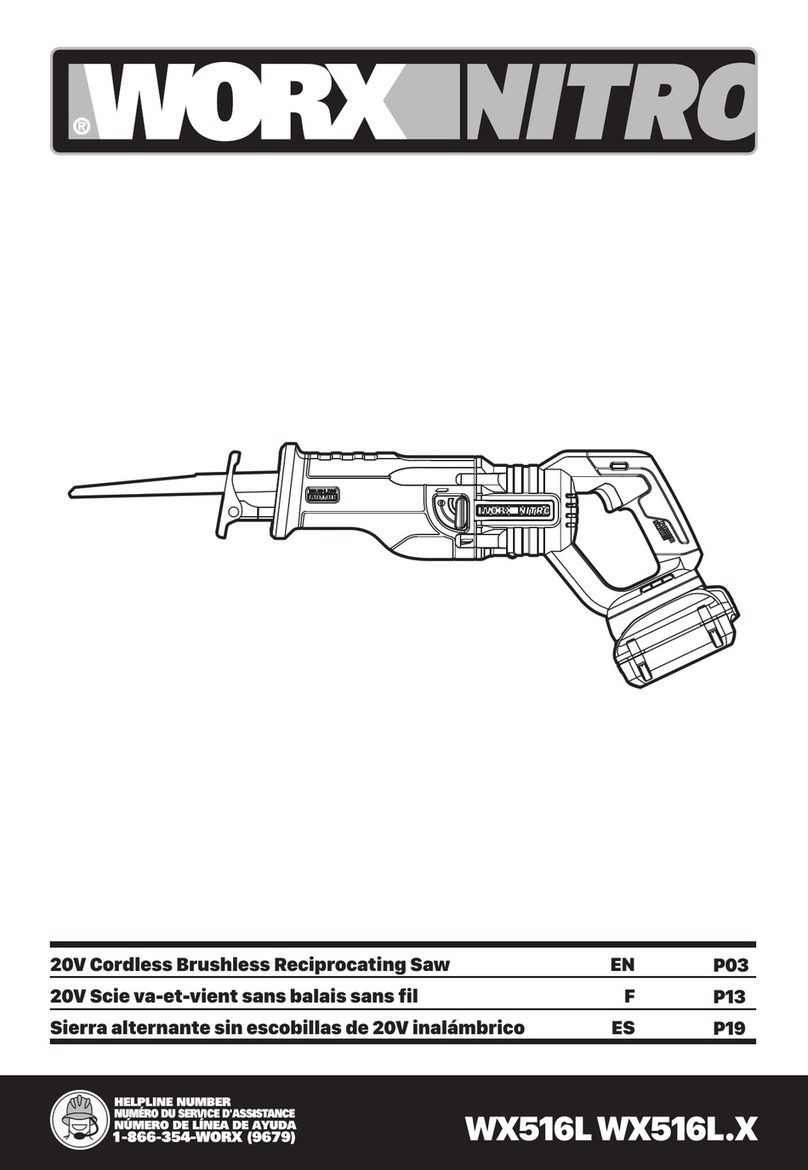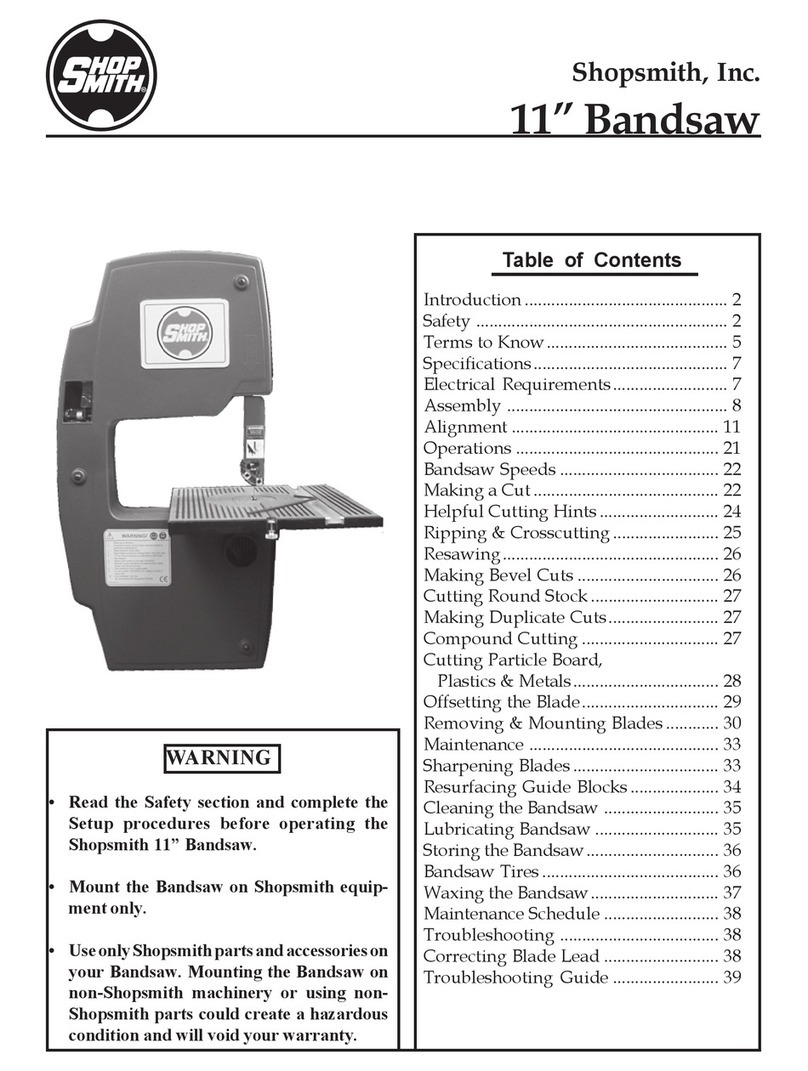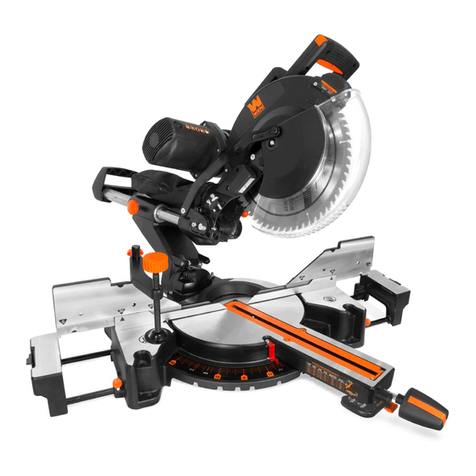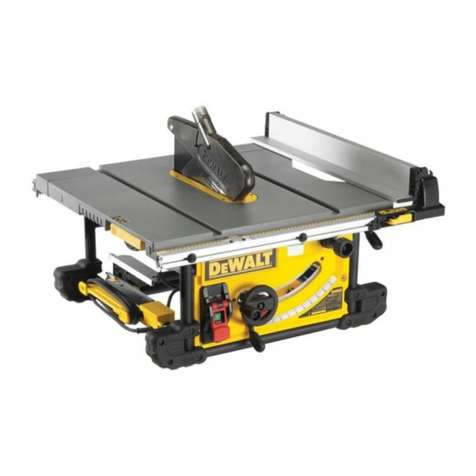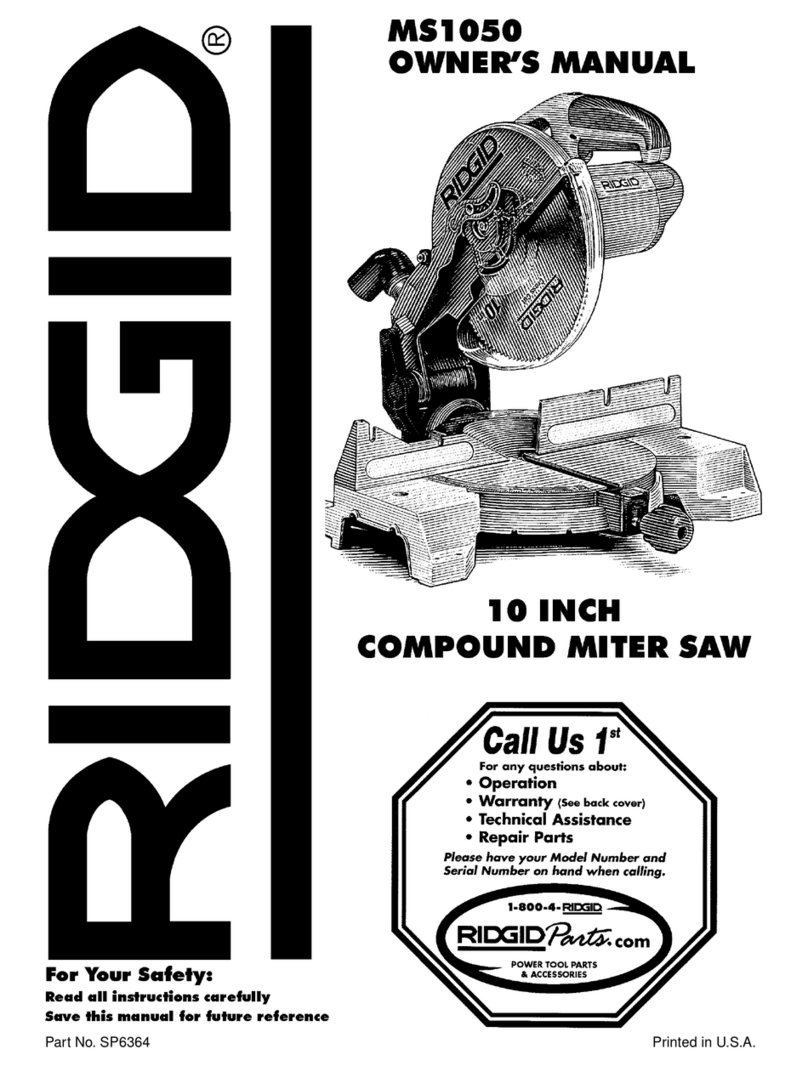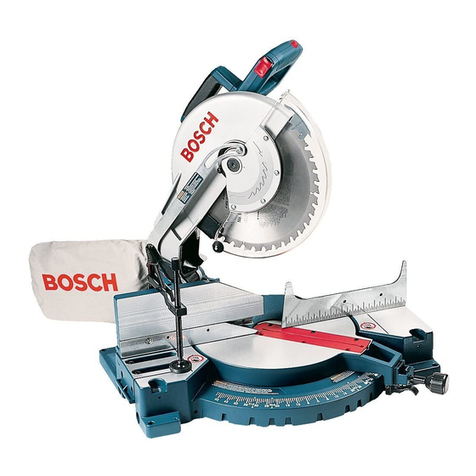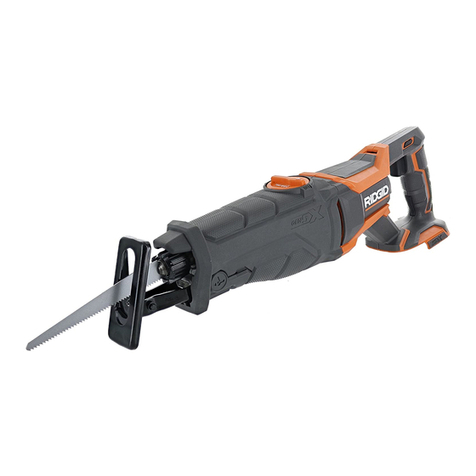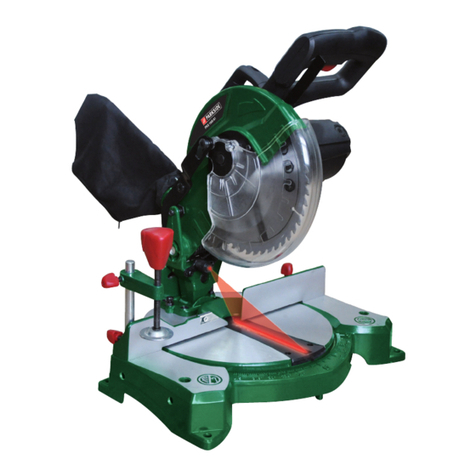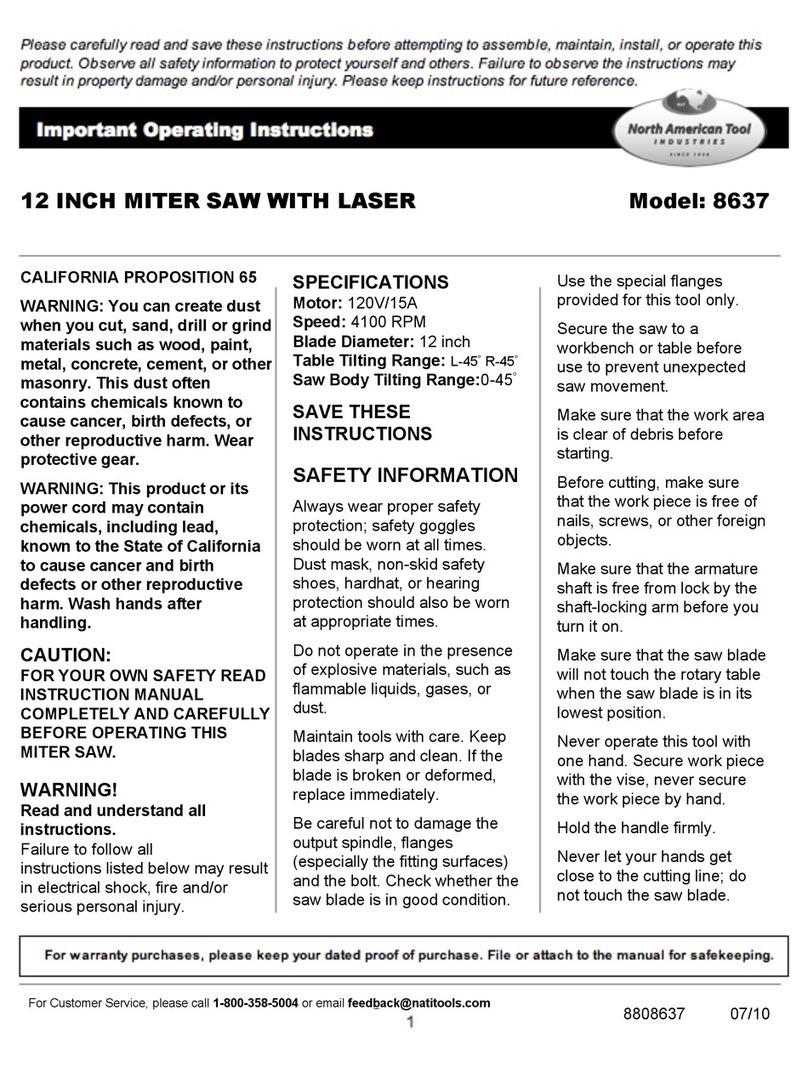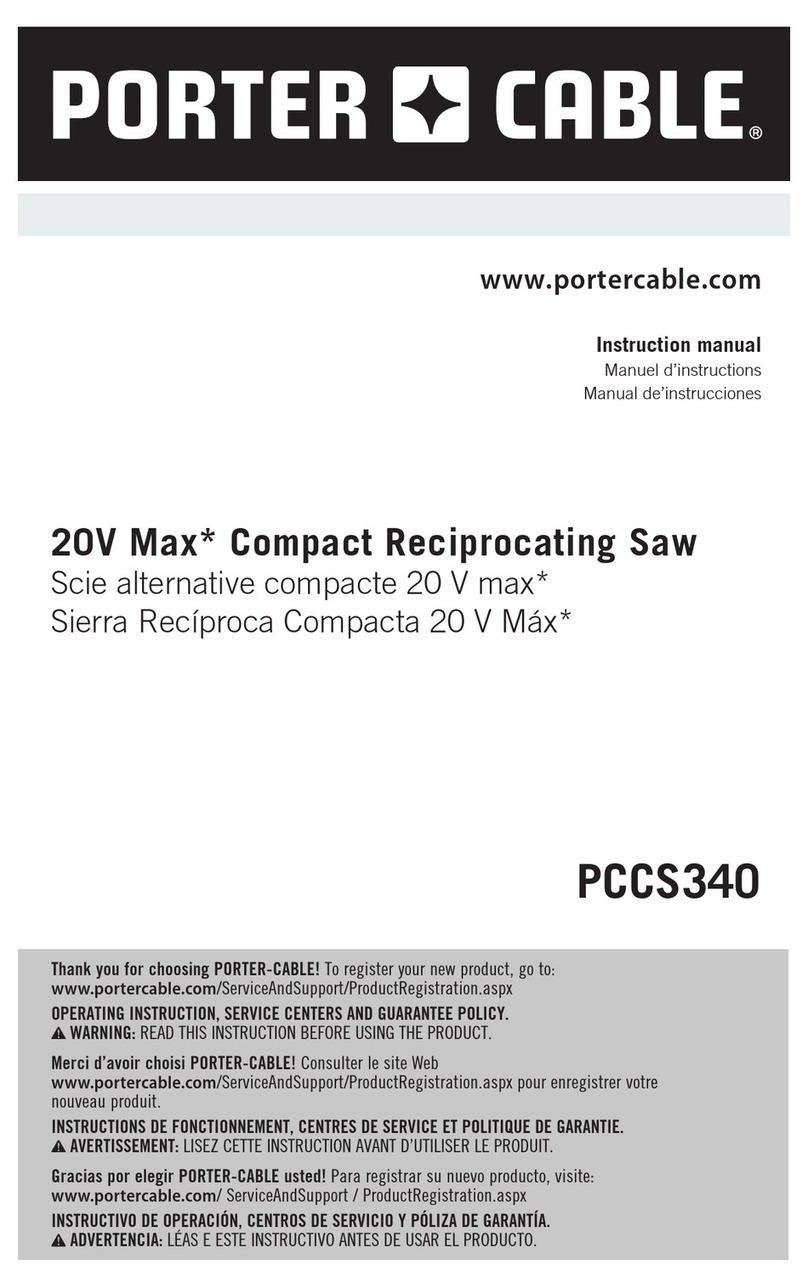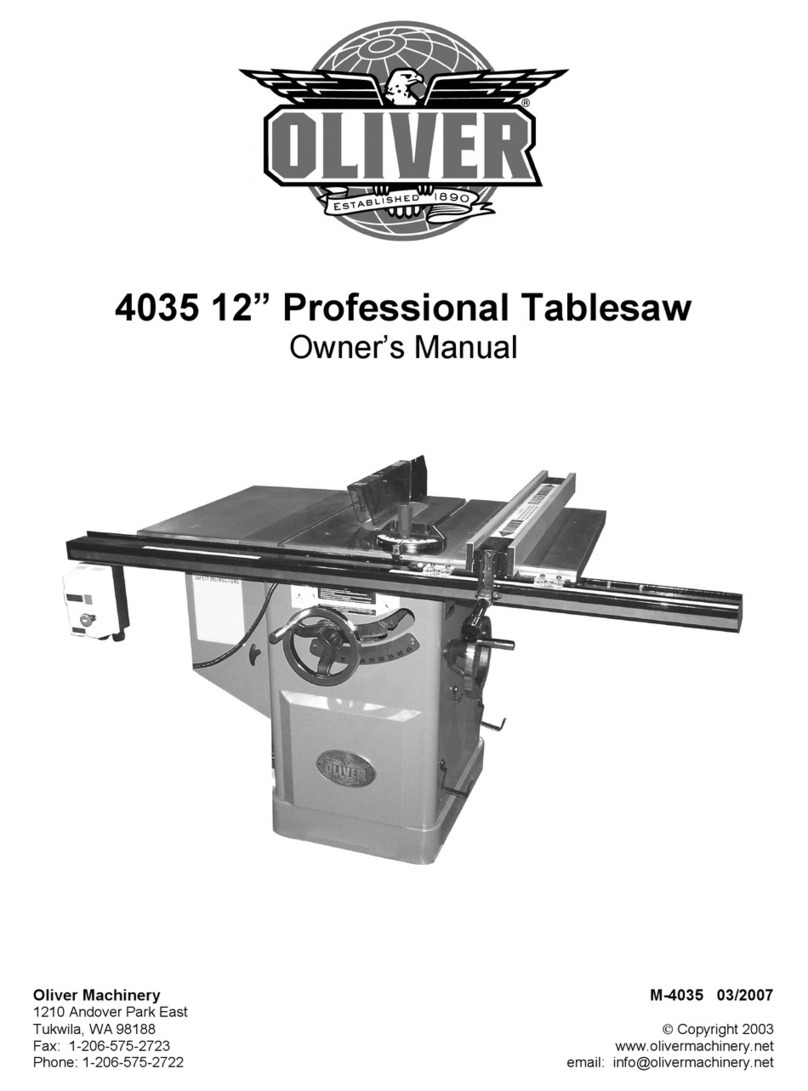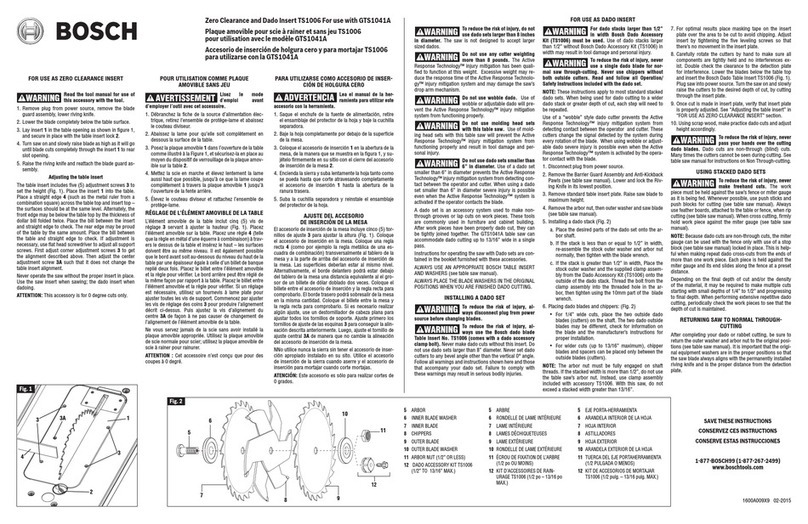Worx Nitro WX531 Series User manual

WX531 WX531.X
20V Cordless Brushless Circular saw
20V Akku Bürstenlose Kreissäge
Scie circulaire sans l 20V sans brosse
20V Sega circolare senza li e spazzole
Sierra circular sin escobillas inalámbrica de 20V
20V borstelloze elektrische cirkelzaag
20V bezszczotkowa elektryczna piła tarczowa
20 V kefe nélküli elektromos körfűrész
20V ferăstrău electric electric fără perie
20V bezalkalické akumulátorová kotoučová pila
20V bezalkalické akumulátorová kotúčová píla
Serra circular sem escova 20V
20V borstfri elektrisk cirkelsåg
20V brezkrtačna brezkrtačni krožna žaga
Ασύρματο δισκοπρίονο χωρίς ψήκτρες 20V
аккумуляторная дисковая пила
P09
P18
P30
P41
P52
P63
P74
P85
P96
P107
P117
P127
P138
P148
P158
P170
EN
D
F
I
ES
NL
PL
HU
RO
CZ
SK
PT
SV
SL
GR
RU

Original instructions EN
Originalbetriebsanleitung D
Notice originale F
Istruzioni originali I
Manual original ES
Oorspronkelijke gebruiksaanwijzing NL
Instrukcja oryginalna PL
Eredeti használati utasítás HU
Instrucţiuni originale RO
Původní návod k používání CZ
Pôvodný návod na použitie SK
Manual original PT
Bruksanvisning i original SV
Izvirna navodila SL
ΠΡΩΤΟΤΥΠΟ ΟΔΗΓΙΩΝ ΧΡΗΣΗΣ GR
Оригинальное руководство по эксплуатации RU

14
17
16
22
4
13
12
11
10
9
56
8
7
1 2 3
18
19
2021
15

3
2
1
2
B
A2A1
A3
1

2
2
0o
D1C
E1D2
E2 F1
1
1

45O
3
F2
G
45o
1 3
2
4
3
0
2
CM

23
1
3
0
2
CM
3
0
2
CM
H1
H2

I

9
EN20V Cordless Brushless Circular saw
PRODUCT SAFETY
GENERAL SAFETY
WARNINGS
WARNING Read all safety warnings, instructions,
illustrations and specications provided with
this power tool.
Failure to follow all instructions listed
below may result in electric shock, fire and/or serious
injury.
Save all warnings and instructions for future
reference.
The term “power tool” in the warnings refers to your
mains-operated (corded) power tool or battery-operated
(cordless) power tool.
1) Work area safety
a) Keep work area clean and well lit.
Cluttered or dark
areas invite accidents.
b) Do not operate power tools in explosive
atmospheres, such as in the presence of
ammable liquids, gases or dust.
Power tools
create sparks which may ignite the dust or fumes.
c) Keep children and bystanders away while
operating a power tool.
Distractions can cause you
to lose control.
2) Electrical safety
a) Power tool plugs must match the outlet. Never
modify the plug in any way. Do not use any adapter
plugs with earthed (grounded) power tools.
Unmodified plugs and matching outlets will reduce
risk of electric shock.
b) Avoid body contact with earthed or grounded
surfaces, such as pipes, radiators, ranges and
refrigerators.
There is an increased risk of electric
shock if your body is earthed or grounded.
c) Do not expose power tools to rain or wet
conditions.
Water entering a power tool will increase
the risk of electric shock.
d) Do not abuse the cord. Never use the cord for
carrying, pulling or unplugging the power tool.
Keep cord away from heat, oil, sharp edges or
moving parts.
Damaged or entangled cords increase
the risk of electric shock.
e) When operating a power tool outdoors, use an
extension cord suitable for outdoor use.
Use of
a cord suitable for outdoor use reduces the risk of
electric shock.
f) If operating a power tool in a damp location is
unavoidable, use a residual current device (RCD)
protected supply.
Use of an RCD reduces the risk of
electric shock.
3) Personal safety
a) Stay alert, watch what you are doing and use
common sense when operating a power tool. Do
not use a power tool while you are tired or under
the inuence of drugs, alcohol or medication.
A
moment of inattention while operating power tools
may result in serious personal injury.
b) Use personal protective equipment. Always wear
eye protection.
Protective equipment such as dust
mask, non-skid safety shoes, hard hat, or hearing
protection used for appropriate conditions will
reduce personal injuries.
c) Prevent unintentional starting. Ensure the switch
is in the off-position before connecting to power
source and/or battery pack, picking up or carrying
the tool.
Carrying power tools with your finger on the
switch or energising power tools that have the switch
on invites accidents.
d) Remove any adjusting key or wrench before
turning the power tool on.
A wrench or a key left
attached to a rotating part of the power tool may
result in personal injury.
e) Do not overreach. Keep proper footing and balance
at all times.
This enables better control of the power
tool in unexpected situations.
f) Dress properly. Do not wear loose clothing or
jewellery. Keep your hair and clothing away from
moving parts.
Loose clothes, jewellery or long hair
can be caught in moving parts.
g) If devices are provided for the connection of dust
extraction and collection facilities, ensure these
are connected and properly used.
Use of dust
collection can reduce dust-related hazards.
h) Do not let familiarity gained from frequent use of
tools allow you to become complacent and ignore
tool safety principles.
A careless action can cause
severe injury within a fraction of a second.
4) Power tool use and care
a) Do not force the power tool. Use the correct power
tool for your application.
The correct power tool will
do the job better and safer at the rate for which it was
designed.
b) Do not use the power tool if the switch does not
turn it on and off.
Any power tool that cannot be
controlled with the switch is dangerous and must be
repaired.
c) Disconnect the plug from the power source and/
or remove the battery pack, if detachable, from
the power tool before making any adjustments,
changing accessories, or storing power tools.
Such preventive safety measures reduce the risk of
starting the power tool accidentally.
d) Store idle power tools out of the reach of children
and do not allow persons unfamiliar with the power
tool or these instructions to operate the power
tool.
Power tools are dangerous in the hands of
untrained users.
e) Maintain power tools and accessories. Check
for misalignment or binding of moving parts,
breakage of parts and any other condition that may
affect the power tool’s operation. If damaged, have
the power tool repaired before use.
Many accidents
are caused by poorly maintained power tools.
f) Keep cutting tools sharp and clean.
Properly
maintained cutting tools with sharp cutting edges
are less likely to bind and are easier to control.
g) Use the power tool, accessories and tool bits etc.
in accordance with these instructions, taking into
account the working conditions and the work to
be performed.
Use of the power tool for operations
different from those intended could result in a

10
EN20V Cordless Brushless Circular saw
hazardous situation.
h) Keep handles and grasping surfaces dry, clean
and free from oil and grease.
Slippery handles and
grasping surfaces do not allow for safe handling and
control of the tool in unexpected situations.
5) Battery tool use and care
a) Recharge only with the charger specied by the
manufacturer.
A charger that is suitable for one type
of battery pack may create a risk of fire when used
with another battery pack.
b) Use power tools only with specically designated
battery packs.
Use of any other battery packs may
create a risk of injury and fire.
c) When battery pack is not in use, keep it away from
other metal objects, like paper clips, coins, keys,
nails, screws or other small metal objects, that can
make a connection from one terminal to another.
Shorting the battery terminals together may cause
burns or a fire.
d) Under abusive conditions, liquid may be ejected
from the battery; avoid contact. If contact
accidentally occurs, ush with water. If liquid
contacts eyes, additionally seek medical help.
Liquid ejected from the battery may cause irritation
or burns.
e) Do not use a battery pack or tool that is damaged
or modied.
Damaged or modified batteries may
exhibit unpredictable behaviour resulting in fire,
explosion or risk of injury.
f) Do not expose a battery pack or tool to re
or excessive temperature.
Exposure to fire or
temperature above 130 °C may cause explosion.
g) Follow all charging instructions and do not charge
the battery pack or tool outside the temperature
range specied in the instructions.
Charging
improperly or at temperatures outside the specified
range may damage the battery and increase the risk
of fire.
6) Service
a) Have your power tool serviced by a qualied repair
person using only identical replacement parts.
This will ensure that the safety of the power tool is
maintained.
b) Never service damaged battery packs.
Service
of battery packs should only be performed by the
manufacturer or authorized service providers.
SAFETY INSTRUCTIONS
FOR ALL SAWS
CUTTING PROCEDURES
a) DANGER: Keep hands away from cutting area
and the blade. If both hands are holding
the saw, they cannot be cut by the blade.
b) Do not reach underneath the workpiece. The
guard cannot protect you from the blade below the
workpiece.
c) Adjust the cutting depth to the thickness of the
workpiece. Less than a full tooth of the blade teeth
should be visible below the workpiece.
d) Never hold the workpiece in your hands or across
your leg while cutting. Secure the workpiece to a
stable platform. It is important to support the work
properly to minimise body exposure, blade binding, or
loss of control.
e) Hold the power tool by insulated gripping
surfaces, when performing an operation where
the cutting tool may contact hidden wiring.
Contact with a “live” wire will also make exposed
metal parts of the power tool “live” and could give the
operator an electric shock.
f) When ripping, always use a rip fence or straight
edge guide. This improves the accuracy of cut and
reduces the chance of blade binding.
g) Always use blades with correct size and shape
(diamond versus round) of arbour holes. Blades
that do not match the mounting hardware of the saw
will run off-centre, causing loss of control.
h) Never use damaged or incorrect blade washers
or bolt. The blade washers and bolt were specially
designed for your saw, for optimum performance and
safety of operation.
FURTHER SAFETY
INSTRUCTIONS FOR ALL
SAWS
Kickback causes and related warnings
— kickback is a sudden reaction to a pinched, jammed or
misaligned saw blade, causing an uncontrolled saw to lift
up and out of the workpiece toward the operator;
—when the blade is pinched or jammed tightly by the
kerf closing down, the blade stalls and the motor reaction
drives the unit rapidly back toward the operator;
— if the blade becomes twisted or misaligned in the cut,
the teeth at the back edge of the blade can dig into the top
surface of the wood causing the blade to climb out of the
kerf and jump back toward the operator.
Kickback is the result of saw misuse and/or incorrect
operating procedures or conditions and can be avoided by
taking proper precautions as given below.
a) Maintain a rm grip on the saw and position your
arms to resist kickback forces. Position your body
to either side of the blade, but not in line with
the blade. Kickback could cause the saw to jump
backwards, but kickback forces can be controlled by
the operator, if proper precautions are taken.
b) When blade is binding, or when interrupting a
cut for any reason, release the trigger and hold
the saw motionless in the material until the
blade comes to a complete stop. Never attempt
to remove the saw from the work or pull the saw
backward while the blade is in motion or kickback
may occur. Investigate and take corrective actions to
eliminate the cause of blade binding.
c) When restarting a saw in the workpiece, centre
the saw blade in the kerf so that the saw teeth are
not engaged into the material. If a saw blade binds,
it may walk up or kickback from the workpiece as the
saw is restarted.

11
EN20V Cordless Brushless Circular saw
d) Support large panels to minimise the risk of blade
pinching and kickback. Large panels tend to sag
under their own weight. Supports must be placed
under the panel on both sides, near the line of cut and
near the edge of the panel.
e) Do not use dull or damaged blades. Unsharpened
or improperly set blades produce narrow kerf causing
excessive friction, blade binding and kickback.
f) Blade depth and bevel adjusting locking levers
must be tight and secure before making the cut.
If blade adjustment shifts while cutting, it may cause
binding and kickback.
g) Use extra caution when sawing into existing walls
or other blind areas. The protruding blade may cut
objects that can cause kickback.
SAFETY INSTRUCTIONS
FOR CIRCULAR SAW WITH
INNER PENDULUM GUARD
Lower guard function
a) Check the lower guard for proper closing before
each use. Do not operate the saw if the lower
guard does not move freely and close instantly.
Never clamp or tie the lower guard into the open
position. If the saw is accidentally dropped, the
lower guard may be bent. Raise the lower guard with
the retracting handle and make sure it moves freely
and does not touch the blade or any other part, in all
angles and depths of cut.
b) Check the operation of the lower guard spring.
If the guard and the spring are not operating
properly, they must be serviced before use. Lower
guard may operate sluggishly due to damaged
parts, gummy deposits, or a build-up of debris.
c) The lower guard may be retracted manually
only for special cuts such as “plunge cuts”
and “compound cuts.” Raise the lower guard by
retracting handle and as soon as the blade enters
the material, the lower guard must be released. For
all other sawing, the lower guard should operate
automatically.
d) Always observe that the lower guard is covering
the blade before placing the saw down on bench
or oor. An unprotected, coasting blade will cause
the saw to walk backwards, cutting whatever is in its
path. Be aware of the time it takes for the blade to
stop after switch is released.
ADDITIONAL SAFETY
RULES FOR YOUR
CIRCULAR SAW
1. Use only saw blades recommended by the
manufacturer, which conform to EN 847-1, if
intended for wood and analogous materials.
2. Do not use any abrasive wheels.
3. Use only blade diameter(s) in accordance with the
markings.
4. Identify the correct saw blade to be used for the
material to be cut.
5. Use only saw blades that are marked with a speed
equal or higher than the speed marked on the tool.
CUT-OFF MACHINE SAFETY
WARNINGS
a) The guard provided with the tool must be securely
attached to the power tool and positioned for
maximum safety, so the least amount of wheel is
exposed towards the operator. Position yourself
and bystanders away from the plane of the
rotating wheel. The guard helps to protect operator
from broken wheel fragments and accidental
contact with wheel.
b) Use only bonded reinforced or diamond cut-off
wheels for your power tool. Just because an
accessory can be attached to your power tool, it
does not assure safe operation.
c) The rated speed of the accessory must be at
least equal to the maximum speed marked on the
power tool. Accessories running faster than their
rated speed can break and fly apart.
d) Wheels must be used only for recommended
applications. For example: do not grind with the
side of cut-off wheel. Abrasive cut-off wheels are
intended for peripheral grinding, side forces applied
to these wheels may cause them to shatter.
e) Always use undamaged wheel anges that are of
correct diameter for your selected wheel. Proper
wheel flanges support the wheel thus reducing the
possibility of wheel breakage.
f) Do not use worn down reinforced wheels from
larger power tools. Wheels intended for a larger
power tool are not suitable for the higher speed of a
smaller tool and may burst.
g) The outside diameter and the thickness of your
accessory must be within the capacity rating of
your power tool. Incorrectly sized accessories
cannot be adequately guarded or controlled.
h) The arbour size of wheels and anges must
properly t the spindle of the power tool. Wheels
and flanges with arbour holes that do not match the
mounting hardware of the power tool will run out of
balance, vibrate excessively and may cause loss of
control.
i) Do not use damaged wheels. Before each use,
inspect the wheels for chips and cracks. If power
tool or wheel is dropped, inspect for damage or
install an undamaged wheel. After inspecting
and installing the wheel, position yourself and
bystanders away from the plane of the rotating
wheel and run the power tool at maximum no
load speed for one minute. Damaged wheels will
normally break apart during this test time.
j) Wear personal protective equipment. Depending
on application, use face shield, safety goggles
or safety glasses. As appropriate, wear dust
mask, hearing protectors, gloves and shop apron
capable of stopping small abrasive or workpiece
fragments. The eye protection must be capable
of stopping flying debris generated by various

12
EN20V Cordless Brushless Circular saw
operations. The dust mask or respirator must be
capable of filtrating particles generated by your
operation. Prolonged exposure to high intensity
noise may cause hearing loss.
k) Keep bystanders a safe distance away from work
area. Anyone entering the work area must wear
personal protective equipment. Fragments of
workpiece or of a broken wheel may fly away and
cause injury beyond immediate area of operation.
l) Hold the power tool by insulated gripping
surfaces only, when performing an operation
where the cutting accessory may contact hidden
wiring. Cutting accessory contacting a “live” wire
may make exposed metal parts of the power tool
“live” and could give the operator an electric shock.
m) Never lay the power tool down until the accessory
has come to a complete stop. The spinning wheel
may grab the surface and pull the power tool out of
your control.
n) Do not run the power tool while carrying it at
your side. Accidental contact with the spinning
accessory could snag your clothing, pulling the
accessory into your body.
o) Regularly clean the power tool’s air vents. The
motor’s fan will draw the dust inside the housing
and excessive accumulation of powdered metal
may cause electrical hazards.
p) Do not operate the power tool near ammable
materials. Sparks could ignite these materials.
KICKBACK AND RELATED
WARNINGS
Kickback is a sudden reaction to a pinched or snagged
rotating wheel. Pinching or snagging causes rapid
stalling of the rotating wheel which in turn causes the
uncontrolled power tool to be forced in the direction
opposite of the wheel’s rotation at the point of the
binding.
For example, if an abrasive wheel is snagged or pinched
by the workpiece, the edge of the wheel that is entering
into the pinch point can dig into the surface of the
material causing the wheel to climb out or kick out. The
wheel may either jump toward or away from the operator,
depending on direction of the wheel’s movement at the
point of pinching. Abrasive wheels may also break under
these conditions.
Kickback is the result of power tool misuse and/or
incorrect operating procedures or conditions and can be
avoided by taking proper precautions as given below.
a) Maintain a rm grip on the power tool and
position your body and arm to allow you to resist
kickback forces. Always use auxiliary handle,
if provided, for maximum control over kickback
or torque reaction during start-up. The operator
can control torque reactions or kickback forces, if
proper precautions are taken.
b) Never place your hand near the rotating
accessory. Accessory may kickback over your hand.
c) Do not position your body in line with the rotating
wheel. Kickback will propel the tool in direction
opposite to the wheel’s movement at the point of
snagging.
d) Use special care when working corners, sharp
edges etc. Avoid bouncing and snagging the
accessory. Corners, sharp edges or bouncing have
a tendency to snag the rotating accessory and
cause loss of control or kickback.
e) Do not attach a saw chain, woodcarving blade,
segmented diamond wheel with a peripheral gap
greater than 10 mm or toothed saw blade. Such
blades create frequent kickback and loss of control.
f) Do not “jam” the wheel or apply excessive
pressure. Do not attempt to make an excessive
depth of cut. Overstressing the wheel increases the
loading and susceptibility to twisting or binding of
the wheel in the cut and the possibility of kickback
or wheel breakage.
g) When wheel is binding or when interrupting a cut
for any reason, switch off the power tool and hold
the power tool motionless until the wheel comes
to a complete stop. Never attempt to remove the
wheel from the cut while the wheel is in motion
otherwise kickback may occur. Investigate and
take corrective action to eliminate the cause of
wheel binding.
h) Do not restart the cutting operation in the
workpiece. Let the wheel reach full speed and
carefully re-enter the cut. The wheel may bind,
walk up or kickback if the power tool is restarted in
the workpiece.
i) Support panels or any oversized workpiece
to minimize the risk of wheel pinching and
kickback. Large workpieces tend to sag under their
own weight. Supports must be placed under the
workpiece near the line of cut and near the edge of
the workpiece on both sides of the wheel.
j) Use extra caution when making a “pocket cut”
into existing walls or other blind areas. The
protruding wheel may cut gas or water pipes,
electrical wiring or objects that can cause kickback.
ADDITIONAL SAFETY
RULES:
1. Always wear a dust mask.
SAFETY WARNINGS FOR
BATTERY PACK
a) Do not dismantle, open or shred cells or battery
pack.
b) Do not short-circuit a battery pack. Do not store
battery packs haphazardly in a box or drawer
where they may short-circuit each other or be
short-circuited by conductive materials.When
battery pack is not in use, keep it away from other
metal objects, like paper clips, coins, keys, nails,
screws or other small metal objects, that can make
a connection from one terminal to another. Shorting
the battery terminals together may cause burns or a
fire.
c) Do not expose battery pack to heat or re. Avoid
storage in direct sunlight.

13
EN20V Cordless Brushless Circular saw
d) Do not subject battery pack to mechanical shock.
e) In the event of battery leaking, do not allow the
liquid to come into contact with the skin or eyes.
If contact has been made, wash the affected area
with copious amounts of water and seek medical
advice.
f) Seek medical advice immediately if a cell or
battery pack has been swallowed.
g) Keep battery pack clean and dry.
h) Wipe the battery pack terminals with a clean dry
cloth if they become dirty.
i) Battery pack needs to be charged before use.
Always refer to this instruction and use the
correct charging procedure.
j) Do not maintain battery pack on charge when not
in use.
k) After extended periods of storage, it may
be necessary to charge and discharge the
battery pack several times to obtain maximum
performance.
l) Battery pack gives its best performance when it is
operated at normal room temperature (20 °C ± 5
°C).
m) When disposing of battery packs, keep battery
packs of different electrochemical systems
separate from each other.
n) Recharge only with the charger specied by
Worx. Do not use any charger other than that
specically provided for use with the equipment.
A charger that is suitable for one type of battery
pack may create a risk of fire when used with
another battery pack.
o) Do not use any battery pack which is not designed
for use with the equipment.
p) Keep battery pack out of the reach of children.
q) Retain the original product literature for future
reference.
r) Remove the battery from the equipment when not
in use.
s) Dispose of properly.
t) Do not mix cells of different manufacture,
capacity, size or type within a device.
u) Do not remove battery pack from its original
packaging until required for use.
v) Observe the plus (+) and minus (–) marks on the
battery and ensure correct use.
SYMBOLS
To reduce the risk of injury, user must read
instruction manual
Warning
Wear ear protection
Wear eye protection
Wear dust mask
Batteries may enter water cycle if disposed
improperly, which can be hazardous
for ecosystem. Do not dispose of waste
batteries as unsorted municipal waste.
Do not burn
Make sure the battery is removed prior to
changing accessories.
Wear protective gloves
Li-I on
Li-Ion battery This product has been
marked with a symbol relating to ‘separate
collection’ for all battery packs and
battery pack. It will then be recycled or
dismantled in order to reduce the impact
on the environment. Battery packs can
be hazardous for the environment and
for human health since they contain
hazardous substances.
TCT blade
Wood
Metal
Aluminium
Plastic
Abrasive cutting disc

14
EN20V Cordless Brushless Circular saw
HCS blade
Tile
Incorrect
Correct
Lock
Unlock
Waste electrical products must not be
disposed of with household waste. Please
recycle where facilities exist. Check with
your local authorities or retailer for recy-
cling advice.
COMPONENT LIST
1. SAFETY SWITCH
2. ON/OFF TRIGGER
3. SOFT GRIP HANDLE
4. HEX KEY
5. BLADE GUARD LEVER
6. BLADE GUARD
7. BASE PLATE
8. PARALLEL GUIDE
9. CUTTING MARK, 0°
10. CUTTING MARK, 45°
11. PARALLEL GUIDE CLAMPING FIXTURE
12. BEVEL ADJUSTMENT LEVER
13. DUST EXTRACTION OUTLET
14. VACUUM ADAPTER
15. FIXED UPPER BLADE GUARD
16. SPINDLE LOCK BUTTON
17. DEPTH ADJUSTMENT LEVER
18. BLADE BOLT
19. OUTER FLANGE
20. SAW BLADE*
21. INNER FLANGE
22. BATTERY PACK*
*Not all the accessories illustrated or described are
included in standard delivery.
TECHNICAL DATA
Type WX531 WX531.X (5- designation of machinery,
representative of Saw)
WX531 WX531.X**
Voltage 20V Max***
Rated speed 6900/min
No load speed 6900/min
Blade size
24T TCT
Blade(WA5100) 120mm x 1.5mmx
9.5mmx 24T
60T HCS
Blade(WA8302) 115mm x 1.2mm x
9.5mm x60T
Abrasive cutting
disc (WA5048) 115mm x 1.6mm x
9.5mm x60 G
Cutting capacity
Cutting Depth
at 90° 41mm
Cutting Depth
at 45° 29.5mm
Bevel capacity 0-46°
Machine weight
(Bare tool) 1.71kg
** X=1-999,A-Z,M1-M9 there are only used for different
customers, there are no safe relevant changes between
these models
***Voltage measured without workload. Initial battery
voltage reaches maximum of 20 volts. Nominal voltage is
18 volts.

15
EN20V Cordless Brushless Circular saw
Category Type Capacity
20V Battery
WA3550 1.5Ah
WA3550.1 1.5Ah
WA3551 2.0Ah
WA3551.1 2.0Ah
WA3553 4.0Ah
20V Charger
WA3880 2.0A
WA3760 0.4A
WA3869 2.0A
We recommend that you purchase your accessories
from the same store that sold you the tool. Refer to the
accessory packaging for further details. Store personnel
can assist you and offer advice.
NOISE INFORMATION
(CUTTING WOOD/CUTTING
METAL)
A weighted sound pressure LpA= 81.2dB(A)
A weighted sound power LwA= 92.2dB(A)
KpA&KwA 3dB(A)
Wear ear protection
NOISE INFORMATION
(CUTTING TILE)
A weighted sound pressure LpA= 88.5dB(A)
A weighted sound power LwA= 99.5dB(A)
KpA&KwA 3dB(A)
Wear ear protection
VIBRATION INFORMATION
CUTTING WOOD/CUTTING
METAL)
Vibration total values (triax vector sum) determined
according to EN 62841:
Vibration emission
value:
Cutting wood:ah, = 0.469m/s2
Uncertainty K = 1.5m/s
Cutting metal: ah,M = 0.455m/s2
Uncertainty K= 1.5m/s
The declared vibration total value and the declared noise
emission value have been measured in accordance with
a standard test method and may be used for comparing
one tool with another.
The declared vibration total value and the declared
noise emission value may also be used in a preliminary
assessment of exposure.
WARNING: The vibration and noise emissions
during actual use of the power tool can differ from
the declared value depending on the ways in which the
tool is used especially what kind of workpiece is
processed dependant on the following examples and
other variations on how the tool is used:
How the tool is used and the materials being cut or
drilled.
The tool being in good condition and well maintained.
The use of the correct accessory for the tool and
ensuring it is sharp and in good condition.
The tightness of the grip on the handles and if any anti
vibration and noise accessories are used.
And the tool is being used as intended by its design and
these instructions.
This tool may cause hand-arm vibration syndrome if
its use is not adequately managed.
WARNING: To be accurate, an estimation of
exposure level in the actual conditions of use
should also take account of all parts of the operating
cycle such as the times when the tool is switched off and
when it is running idle but not actually doing the job. This
may significantly reduce the exposure level over the total
working period.
Helping to minimise your vibration and noise exposure
risk.
Always use sharp chisels, drills and blades.
Maintain this tool in accordance with these instructions
and keep well lubricated (where appropriate).
If the tool is to be used regularly then invest in anti
vibration and noise accessories.
Plan your work schedule to spread any high vibration tool
use across a number of days.
VIBRATION INFORMATION
(CUTTING TILE)
Vibration total values (triax vector sum) determined
according to EN 60745:

16
EN20V Cordless Brushless Circular saw
Vibration
emission value:
Cutting tile: ah=0.466m/s2
Uncertainty K= 1.5m/s
The declared vibration total value may be used for
comparing one tool with another, and may also be used
in a preliminary assessment of exposure.
WARNING: The vibration emission value during
actual use of the power tool can differ from the
declared value depending on the ways in which the tool
is used dependant on the following examples and other
variations on how the tool is used:
How the tool is used and the materials being cut or
drilled.
The tool being in good condition and well maintained
Using the correct accessory for the tool and ensuring it is
sharp and in good condition.
The tightness of the grip on the handles and if any anti
vibration accessories are used.
And the tool is being used as intended by its design and
these instructions.
This tool may cause hand-arm vibration syndrome if
its use is not adequately managed.
WARNING: To be accurate, an estimation of
exposure level in the actual conditions of use
should also take account of all parts of the operating
cycle such as the times when the tool is switched off and
when it is running idle but not actually doing the job. This
may significantly reduce the exposure level over the total
working period.
Helping to minimise your vibration exposure risk.
ALWAYS use sharp chisels, drills and blades
Maintain this tool in accordance with these instructions
and keep well lubricated (where appropriate)
If the tool is to be used regularly then invest in anti
vibration accessories.
Plan your work schedule to spread any high vibration tool
use across a number of days.
OPERATING
INSTRUCTIONS
NOTE: Before using the tool, read the instruction
book carefully.
WARNING: Do not release the handle until the saw blade
come to complete stop and do not touch saw blade while
the saw blade is running.
Intended use: The tool is intended for ripping and cross-
cutting wood and other materials in straight cutting lines,
while resting firmly on the work piece.
ASSEMBLY AND OPERATION
ACTION FIGURE
BEFORE OPERATION
Removing the battery pack See Fig. A1
Charging the battery See Fig. A2
Installing the battery pack See Fig. A3
ASSEMBLY
Mounting and Removing the
Blade
NOTE: Lock or loose the blade
bolt, the spindle lock button
should be pressed.
WARNING: Always remove
the battery before changing
the blade!
See Fig. B
Safety switch and On/Off trigger
WARNING: To avoid cutting
injury from the sharp blade,
please don’t put your hands
around the Base Plate.
NOTE:Keep the dust adapter
connected to dust collecting
device when using the tool.
See Fig. C
Rip and Cross Cutting
NOTE: The cutting line of saw
blade is aligned with the cutting
mark 0°.
See Fig. D1, D2
Parallel Guide See Fig. E1, E2
Adjusting the Cutting Depth See Fig. F1, F2
Adjusting the Cutting Angle
NOTE:The cutting line of saw
blade is aligned with the cutting
mark 45°.
See Fig. G
Pocket /Plunge See Fig. H1, H2
Sawdust Removal See Fig. I
WORKING HINTS FOR YOUR
TOOL
If your power tool becomes too hot, please run your
circular saw no load for 2-3 minutes to cool the motor.
Avoid prolonged usage at very low speeds.
Protect saw blades against impact and shock. Cutting
with extreme force can significantly reduces the
performance capability of the tool and reduces the
service life of the saw blade. Sawing performance and
cutting quality depend essentially on the condition and
the tooth count of the saw blade. Therefore, use only
sharp saw blades that are suited for the material being
cut.
Choice of blades: 24 teeth for general work, approx. 40

17
EN20V Cordless Brushless Circular saw
teeth for finer cuts, more than 40 teeth for very fine cuts
into delicate surfaces, diamond for tile, cement board,
etc.
Only use saw blades recommended.
MAINTAIN TOOLS WITH
CARE
Remove the battery before carrying out any adjustment,
servicing or maintenance.
Keep tools sharp and clean for better and safer
performance. Follow instructions for lubricating and
changing accessories. Inspect tool cords periodically and
if damaged, have repaired by authorized service facility.
Your power tool requires no additional lubrication or
maintenance. There are no user serviceable parts in your
power tool. Never use water or chemical cleaners to clean
your power tool. Wipe clean with a dry cloth. Always store
your power tool in a dry place. Keep the motor ventilation
slots clean. Keep all working controls free of dust.
Periodically clear dust and chips from guard and base to
ensure proper performance.
FOR BATTERY TOOLS
The ambient temperature range for the use and storage of
tool and battery is 0oC-45oC.
The recommended ambient temperature range for the
charging system during charging is 0oC-40oC.
ENVIRONMENTAL
PROTECTION
Waste electrical products must not be disposed
of with household waste. Please recycle where
facilities exist. Check with your local authorities or
retailer for recycling advice.
TROUBLE SHOOTING
Symptom Possible Causes Possible Solution
Tool will not start when operating the
on/off trigger. Battery park not plugged in.
Battery park is powered off.
Carbon brush has worn down
Check to make sure battery park is
connected well into a working outlet.
Charging the battery.
Replace the carbon brush using a qualified
maintenance person.
Cutting depth is less than that is set. Sawdust accumulated at the rear
of the base. Shake out sawdust. Consider connecting a
vacuum for dust collection.
Blade spins or slips Blade is not tightly engaged with
the spindle. Remove the blade and reassemble it as
described in Mounting and Removing the
Blade section.
Blade will not cut a straight line. Blade is dull.
Blade is not mounted properly.
Saw is not being guided properly.
Mount a new, sharp blade on the saw.
Check that blade is properly mounted.
Use a parallel guide.
Blade kicks back when beginning
a cut Saw blade teeth may be engaged in
the material when starting.
Blade is not spinning fast enough
Before restarting a saw in the workpiece,
center the saw blade in the kerf and check
that the saw teeth are not engaged into
the material.
Allow the saw blade to reach full speed
prior to beginning a cut in the material.

D20V Akku Bürstenlose Kreissäge
18
DECLARATION OF
CONFORMITY
We,
Positec Germany GmbH
Postfach 32 02 16, 50796 Cologne, Germany
Declare that the product,
Description Battery-powered circular saw
Type WX531 WX531.X (5- designation of machinery,
representative of Saw)
Function Cutting various materials with a rotating
toothed blade
Complies with the following directives,
2006/42/EC
2014/30/EU
2011/65/EU&(EU)2015/863
Standards conform to
EN 62841-1
EN 62841-2-5
EN 55014-1
EN 55014-2
EN 60745-1
EN 60745-2-22
EN IEC 61000-3-2
EN 61000-3-3
The person authorized to compile the technical file,
Name Marcel Filz
Address Positec Germany GmbH, Grüner Weg 10,
50825 Cologne, Germany
2020/12/14
Allen Ding
Deputy Chief Engineer, Testing & Certification
Positec Technology (China) Co., Ltd
18, Dongwang Road, Suzhou Industrial
Park, Jiangsu 215123, P. R. China
PRODUKTSICHERHEIT
ALLGEMEINE
SICHERHEITSHINWEISE
FÜR ELEKTROWERKZEUGE
WARNUNG! Machen Sie sich mit allen
Sicherheitswarnungen, Anweisungen,
Abbildungen und Spezikationen vertraut, die
mit diesem Elektrowerkzeug geliefert werden.
Die Nichtbeachtung der unten aufgeführten
Anweisungen kann in elektrischen Schlägen, Feuer
und/oder schweren Verletzungen resultieren.
Bewahren Sie alle Sicherheitshinweise und
Anweisungen für die Zukunft auf.
Der in den Sicherheitshinweisen verwendete Begriff
„Elektrowerkzeug“ bezieht sich auf akkubetriebene
Elektrowerkzeuge (ohne Netzkabel).
1) Arbeitsplatzsicherheit
a) Halten Sie Ihren Arbeitsbereich sauber und gut
beleuchtet. Unordnung oder unbeleuchtete
Arbeitsbereiche können zu Unfällen führen.
b) Arbeiten Sie mit dem Elektrowerkzeug nicht in
explosionsgefährdeter Umgebung, in der sich
brennbare Flüssigkeiten, Gase oder Stäube
benden. Elektrowerkzeuge erzeugen Funken,
die den Staub oder die Dämpfe entzünden
können.
c) Halten Sie Kinder und andere Personen während
der Benutzung des Elektrowerkzeugs fern.Bei
Ablenkung können Sie die Kontrolle über das
Gerät verlieren.
2) Elektrische Sicherheit
a) Der Anschlussstecker des Elektrowerkzeuges
muss in die Steckdose passen. Der Stecker
darf in keiner Weise verändert werden.
Verwenden Sie keine Adapterstecker gemeinsam
mit schutzgeerdeten Elektrowerkzeugen.
Unveränderte Stecker und passende
Steckdosen verringern das Risiko eines
elektrischen Schlages.
b) Vermeiden Sie Körperkontakt mit geerdeten
Oberächen wie von Rohren, Heizungen, Herden
und Kühlschränken. Es besteht ein erhöhtes
Risiko durch elektrischen Schlag, wenn Ihr
Körper geerdet ist.
c) Halten Sie Elektrowerkzeuge von Regen oder
Nässe fern. Das Eindringen von Wasser in
ein Elektrowerkzeug erhöht das Risiko eines
elektrischen Schlages.
d) Zweckentfremden Sie das Kabel nicht, um das
Elektrowerkzeug zu tragen, aufzuhängen oder um
den Stecker aus der Steckdose zu ziehen. Halten
Sie das Kabel fern von Hitze, Öl, scharfen Kanten
oder sich bewegenden Geräteteilen. Beschädigte
oder verwickelte Kabel erhöhen das Risiko
eines elektrischen Schlages.
e) Wenn Sie mit einem Elektrowerkzeug im Freien
arbeiten, verwenden Sie nur Verlängerungskabel,
die auch für den Außenbereich geeignet sind.

D20V Akku Bürstenlose Kreissäge
19
Die Anwendung eines für den Außenbereich
geeigneten Verlängerungskabels verringert das
Risiko eines elektrischen Schlages.
f) Wenn der Betrieb des Elektrowerkzeuges
in feuchter Umgebung nicht vermeidbar ist,
verwenden Sie einen Fehlerstromschutzschalter.
Der Einsatz eines Fehlerstromschutzschalters
vermindert das Risiko eines elektrischen
Schlages.
3) Sicherheit von Personen
a) Seien Sie aufmerksam, Achten Sie darauf,
was Sie tun, und gehen Sie mit Vernunft an die
Arbeit mit einem Elektrowerkzeug. Benutzen
Sie kein Elektrowerkzeug, wenn Sie müde
sind oder unter dem Einuss von Drogen,
Alkohol oder Medikamenten stehen. Ein
Moment der Unachtsamkeit beim Gebrauch
des Elektrowerkzeuges kann zu ernsthaften
Verletzungen führen.
b) Tragen Sie persönliche Schutzausrüstung
und immer eine Schutzbrille. Das Tragen
persönlicher Schutzausrüstung, wie
Staubmaske, rutschfeste Sicherheitsschuhe,
Schutzhelm oder Gehörschutz, je nach Art und
Einsatz des Elektrowerkzeuges, verringert das
Risiko von Verletzungen.
c) Vermeiden Sie eine unbeabsichtigte
Inbetriebnahme. Vergewissern Sie sich, dass
das Elektrowerkzeug ausgeschaltet ist, bevor
Sie es an den Akku anschließen, es aufnehmen
oder tragen. Wenn Sie beim Tragen des
Elektrowerkzeuges den Finger am Schalter
haben oder das Gerät eingeschaltet an die
Stromversorgung anschließen, kann dies zu
Unfällen führen.
d) Entfernen Sie Einstellwerkzeuge oder
Schraubenschlüssel, bevor Sie das
Elektrowerkzeug einschalten. Ein Werkzeug
oder Schlüssel, der sich in einem drehenden
Geräteteil befindet, kann zu Verletzungen
führen.
e) Vermeiden Sie eine abnormale Körperhaltung.
Sorgen Sie für einen sicheren Stand und halten
Sie jederzeit das Gleichgewicht. Dadurch können
Sie das Elektrowerkzeug in unerwarteten
Situationen besser kontrollieren.
f) Tragen Sie geeignete Kleidung. Tragen Sie keine
weite Kleidung oder Schmuck. Halten Sie Haare
und Kleidung fern von sich bewegenden Teilen.
Lockere Kleidung, Schmuck oder lange Haare
können von sich bewegenden Teilen erfasst
werden.
g) Wenn Staubabsaug- und -auffangeinrichtungen
montiert werden können, vergewissern Sie
sich, dass diese angeschlossen sind und
richtig verwendet werden. Verwendung einer
Staubabsaugung kann Gefährdungen durch
Staub verringern.
h) Vermeiden Sie, durch die häuge Nutzung des
Werkzeugs in einen Trott zu verfallen und
Prinzipien für die Werkzeugsicherheit zu
ignorieren. Eine unachtsame Aktion kann
im Bruchteil einer Sekunde zu schweren
Verletzungen führen.
4) Verwendung und Behandlung des
Elektrowerkzeuges
a) Überlasten Sie das Gerät nicht. Verwenden Sie für
Ihre Arbeit das dafür bestimmte Elektrowerkzeug.
Mit dem passenden Elektrowerkzeug arbeiten
Sie besser und sicherer im angegebenen
Leistungsbereich.
b) Benutzen Sie kein Elektrowerkzeug, dessen
Schalter defekt ist. Ein Elektrowerkzeug, das
sich nicht mehr ein- oder ausschalten lässt, ist
gefährlich und muss repariert werden.
c) Klemmen Sie den Stecker von der
Stromversorgung ab und/oder entfernen
Sie den Akku (falls abnehmbar) aus dem
Elektrowerkzeug, bevor Sie Geräteeinstellungen
vornehmen, Zubehörteile wechseln oder das
Gerät weglegen. Diese Vorsichtsmaßnahme
verhindert den unbeabsichtigten Start des
Elektrowerkzeuges.
d) Bewahren Sie unbenutzte Elektrowerkzeuge
außerhalb der Reichweite von Kindern
auf. Lassen Sie Personen das Gerät nicht
benutzen, die mit diesem nicht vertraut sind
oder diese Anweisungen nicht gelesen haben.
Elektrowerkzeuge sind gefährlich, wenn Sie von
unerfahrenen Personen benutzt werden.
e) Warten Sie die Elektrowerkzeuge und Zubehör.
Kontrollieren Sie, ob bewegliche Teile einwandfrei
funktionieren und nicht klemmen, ob Teile
gebrochen oder so beschädigt sind, dass die
Funktion des Elektrowerkzeuges beeinträchtigt
ist. Lassen Sie beschädigte Teile vor dem
Einsatz des Gerätes reparieren. Viele Unfälle
haben ihre Ursache in schlecht gewarteten
Elektrowerkzeugen.
f) Halten Sie Schneidwerkzeuge scharf und sauber.
Sorgfältig gepflegte Schneidwerkzeuge mit
scharfen Schneidkanten verklemmen sich
weniger und sind leichter zu führen.
g) Verwenden Sie Elektrowerkzeug, Zubehör,
Einsatzwerkzeuge usw. entsprechend diesen
Anweisungen. Berücksichtigen Sie dabei die
Arbeitsbedingungen und die auszuführende
Tätigkeit. Der Gebrauch von Elektrowerkzeugen
für andere als die vorgesehenen Anwendungen
kann zu gefährlichen Situationen führen.
h) Halten Sie die Griffe trocken, sauber und frei von
Öl und Fett. Rutschige Griffe und Oberflächen
unterbinden die sichere Bedienbarkeit und
Kontrolle über das Werkzeug in unerwarteten
Situationen.
5) Verwendung und Behandlung des Akkuwerkzeugs
a) Laden Sie die Akkus nur in Ladegeräten auf,
die vom Hersteller empfohlen werden. Für ein
Ladegerät, das für eine bestimmte Art von
Akkus geeignet ist, besteht Brandgefahr, wenn
es mit anderen Akkus verwendet wird.
b) Verwenden Sie nur die dafür vorgesehenen
Akkus in den Elektrowerkzeugen. Der Gebrauch

D20V Akku Bürstenlose Kreissäge
20
von anderen Akkus kann zu Verletzungen und
Brandgefahr führen.
c) Halten Sie den nicht benutzten Akku fern
von Büroklammern, Münzen, Schlüsseln,
Nägeln, Schrauben oder anderen kleinen
Metallgegenständen, die eine Überbrückung
der Kontakte verursachen könnten. Ein
Kurzschluss zwischen den Akkukontakten kann
Verbrennungen oder Feuer zur Folge haben.
d) Bei falscher Anwendung kann Flüssigkeit aus
dem Akku austreten. Vermeiden Sie den Kontakt
damit. Bei zufälligem Kontakt mit Wasser
abspülen. Wenn die Flüssigkeit in die Augen
kommt, nehmen Sie zusätzlich ärztliche Hilfe in
Anspruch. Austretende Akkuflüssigkeit kann zu
Hautreizungen oder Verbrennungen führen.
e) Verwenden Sie kein Akkupack oder Werkzeug,
das beschädigt ist. Beschädigte oder
modifizierte Akkus können unvorhersehbare
Reaktionen auslösen und zu Bränden,
Explosionen oder Verletzungen führen.
f) Setzen Sie das Akkupack oder Werkzeug keinem
Feuer oder übermäßig hohen Temperaturen aus.
Die Belastung durch Feuer oder Temperaturen
über 130 °C kann zur Explosion führen.
g) Befolgen Sie alle Ladeanweisungen, und
laden Sie das Akkupack oder Werkzeug nicht
außerhalb des in den Anweisungen festgelegten
Temperaturbereichs auf. Ein unsachgemäßer
Ladevorgang oder Temperaturen außerhalb
des festgelegten Bereichs können den Akku
schädigen und die Brandgefahr erhöhen.
6) Service
a) Lassen Sie Ihr Elektrowerkzeug nur von
qualiziertem Fachpersonal und nur mit
Original-Ersatzteilen reparieren. Damit wird
sichergestellt, dass die Sicherheit des Gerätes
erhalten bleibt.
b) Führen Sie niemals Wartungsarbeiten an
beschädigten Akkus durch. Die Wartung von
Akkupacks darf nur vom Hersteller selbst
oder autorisierten Dienstleistern durchgeführt
werden.
SICHERHEITSANWEISUNGEN
FÜR ALLE SÄGEN
SÄGEVERFAHREN
a) WARNUNG: Kommen Sie mit Ihren Händen
nicht in den Sägebereich und an das
Sägeblatt. Wenn beide Hände die Kreissäge
halten, kann das Sägeblatt diese nicht verletzen.
b) Greifen Sie nicht unter das Werkstück. Die
Schutzhaube kann Sie unter dem Werkstück
nicht vor dem Sägeblatt schützen.
c) Passen Sie die Schnittiefe an die Dicke des
Werkstückes an. Es sollte weniger als eine volle
Zahnhöhe unter dem Werkstück sichtbar sein.
d) Halten Sie das zu sägende Werkstück niemals
mit der Hand oder über dem Bein fest. Sichern
Sie das Werkstück an einer stabilen Unterlage.
Es ist wichtig, das Werkstück gut zu befestigen,
um die Gefahr von Körperkontakt, Klemmen
des Sägeblattes oder Verlust der Kontrolle zu
minimieren.
e) Halten Sie das Gerät nur an den isolierten
Grifächen, wenn Sie Arbeiten ausführen,
bei denen das Einsatzwerkzeug verborgene
Stromleitungen. Der Kontakt mit einer
spannungsführenden Leitung kann auch
metallene Geräteteile unter Spannung setzen
und zu einem elektrischen Schlag führen.
f) Verwenden Sie beim Längsschneiden immer
einen Anschlag oder eine gerade Kantenführung.
Dies verbessert die Schnittgenauigkeit und
verringert die Möglichkeit, dass das Sägeblatt
klemmt.
g) Verwenden Sie immer Sägeblätter in der richtigen
Grösse und mit passender Aufnahmebohrung
(z.B. sternförmig oder rund). Sägeblätter, die
nicht zu den Montageteilen der Säge passen,
laufen unrund und führen zum Verlust der
Kontrolle.
h) Verwenden Sie niemals beschädigte oder falsche
Sägeblatt-Unterlegscheiben (Flansche) oder
–schrauben. Die Sägeblatt-Unterlegscheiben
und –schrauben wurden speziell für Ihre
Säge konstruiert, für optimale Leistung und
Betriebssicherheit.
URSACHEN UND
VERMEIDUNG EINES
RÜCKSCHLAGES
Ursachen eines Rückschlags und diesbezügliche
Warnhinweise
— Ein Rückschlag ist die plötzliche Reaktion infolge eines
hakenden, klemmenden oder falsch ausgerichteten
Sägeblattes, die dazu führt, daß eine unkontrollierte Säge
abhebt und sich aus dem Werkstück heraus in Richtung
der Bedienperson bewegt;
— Wenn sich das Sägeblatt in dem sich schließenden
Sägespalt verhakt oder verklemmt, blockiert es, und die
Motorkraft schlägt das Gerät in Richtung der Bedienperson
zurück;
— Wird das Sägeblatt im Sägeschnitt verdreht oder
falsch ausgerichtet, können sich die Zähne der hinteren
Sägeblattkante in der Oberfläche des Werkstücks
verhaken, wodurch sich das Sägeblatt aus dem Sägespalt
herausbewegt und die Säge in Richtung der Bedienperson
zurückspringt.
Ein Rückschlag ist die Folge eines falschen oder
fehlerhaften Gebrauchs der Säge. Er kann durch geeignete
Vorsichtsmaßnahmen, wie nachfolgend beschrieben,
verhindert werden.
a) Halten Sie die Säge und bringen Sie Ihre Arme in
eine Stellung, in der Sie den Rückschlagkräften
standhalten können. Halten Sie sich immer
seitlich des Sägeblattes, nie das Sägeblatt in
eine Linie mit Ihrem Körper bringen. Bei einem
Rückschlag kann die Kreissäge rückwärts
springen, jedoch kann die Bedienperson die
Rückschlagkräfte beherrschen, wenn geeignete
Table of contents
Languages:
Other Worx Nitro Saw manuals
